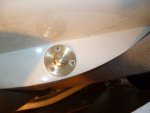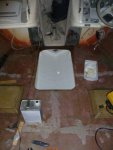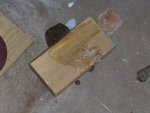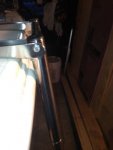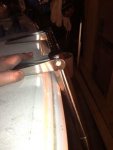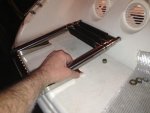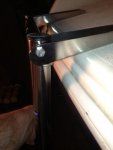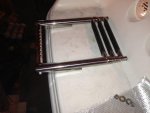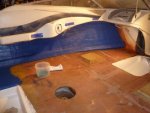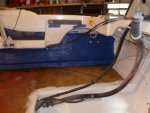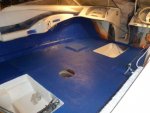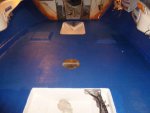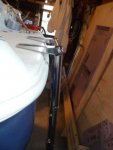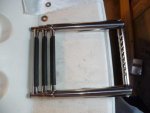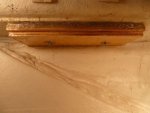Re: Transom problems with Larson 186 SEI I/O Bowrider
Jim,
In summary the bolts towards the bow are doing all the work as their in tension and the back two are in compression (back bolt is there to hold the braket in place, but really is not doing much at all).
If you want to tackle the math yourself, here is what you need.
1. Put the ladder in the position you like the best.
2. Measure the supported distance (bow bolt hole to free edge of bracket), X
3. Measure the distance from bow bolt hole to ladder hinge, Y
4. Determine what is going to be the max weight on the ladder, W
The tension (T) in the bow bolt: T= W(Y-(X-X/6)) / (X-X/6) I had some help from a structural engineer

Now put put the ladder where the brackets are as far towards the bow, but with the ladder falling straight down without hitting the rub rail (and maybe an additional few degrees for comfort) and again calculate the tension.
Here is my thought behind my madness; if the ladder is hitting the rub rail before going vertical the bolts are now in shear (force in the horz axis) in addtion to the back bolt being in compression and the front in tension. If the ladder is allowed to swing under loading and does not hit the rub rail, there is no shear on the bolts. Therefore, I would look at the tension being applied to the front bolt under both scenarios and likely put the ladder/bracket as far aft as I could to where the aft most bolt would still get good support from the backing plate (just in case the bow bolt broke or came lose, etc.).
Let me know what you think. This is probably over thinking it, but if its worth doing its....















